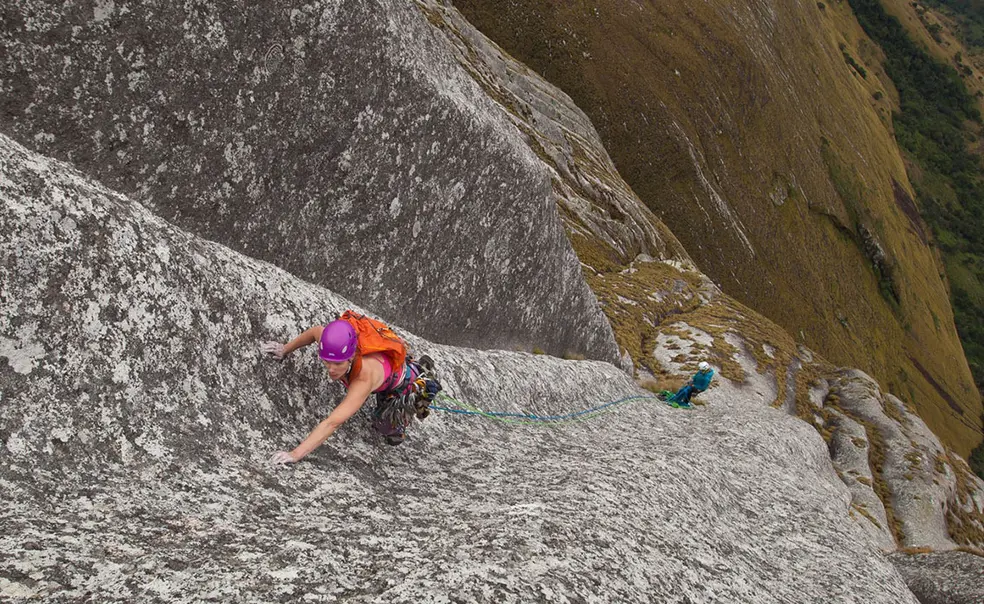Climber and Filmmaker Majka Burhardt ’98 Tells the Story of a Remote Mountain
Even when she was a Princeton student, Majka Burhardt ’98 was living life by her own rules. Burhardt crafted her own study abroad program in order to travel to Nepal during her junior year and was able to take a year off after sophomore year to climb mountains in places like British Columbia, Ecuador, California, and Alaska. Working as a climbing guide and serving as an Outdoor Action leader while at Princeton allowed the anthropology major to combine her love of academics with her passion for climbing.
“I am a total dork and academic, and I love getting out there physically,” Burhardt said. “And I’ve been determined to put those things together for my whole life. I think I always knew that I wanted my life to be complicated – I was always trying to add more to it, no matter what I was doing.”
Today, Burhardt is an author, entrepreneur, professional climber, and filmmaker who has spent the last two decades traveling the world. For the last 10 years, she’s been working mainly in Africa, climbing in and telling stories about places like Ethiopia, South Africa, Namibia, and most recently, Mozambique.
Burhardt fell in love in with Mozambique after seeing photos of its picturesque mountain ranges. As she began to toy with the idea of climbing there, she became fascinated with one peak in particular: Mount Namuli, an isolated mountain that had been mostly unexplored in recent years due to a civil war that wracked the country from 1977 to 1992.
At nearly 8,000 feet, Namuli is the second-highest mountain in Mozambique and is home to roughly 10,000 people and several kinds of endemic species, or plants and animals unique to its environment, which had never been studied. As she began to talk with scientists and conservation groups, Burhardt realized that Namuli presented the perfect opportunity to document how adventure, conservation, and science intersect.
“As climbers, we brought scientists up on to the face to make new discoveries and were able to get them to other points around the mountain that they wouldn’t have been able to get into otherwise,” she said. “Meanwhile we worked with a local conservation group and brought them with us to lead a socioeconomic survey – the first that’s been done in that area.”
Four years later, Burhardt is gearing up to start a film tour for a half-hour documentary she made about the 2014 expedition, aptly titled Namuli. The film follows Burhrdt and her crew of climbers, scientists, and conservationists on their exploration of the island-mountains that span the border between Mozambique and Malawi and the people and animals that call the region home.
“It is so inspiring to put together a group of diverse, passionate experts who want to learn how to do more,” Burhardt said. “And to be at the helm of that, to be fueled by it, and to learn from those people every step of the way was incredible.”
Beginning in March, Burhardt will be on the road for two months to screen and talk about the film in cities across the United States, from Seattle to Burlington (see the schedule atlegadoinitiative.org/namuli-film). She plans to head to Canada, Europe, and Africa later this year and next to share the story with an international audience as well.
In the meantime, Burhardt is spearheading Legado, an organization working on full-scale conservation and development on Mount Namuli. The group is working on several initiatives on the mountain, including conducting a socioeconomic survey of all of the groups of people who live there and bringing different agricultural models to the area.
“We’re trying to create a future for Namuli where the people and the ecosystem can thrive together,” she said.












No responses yet